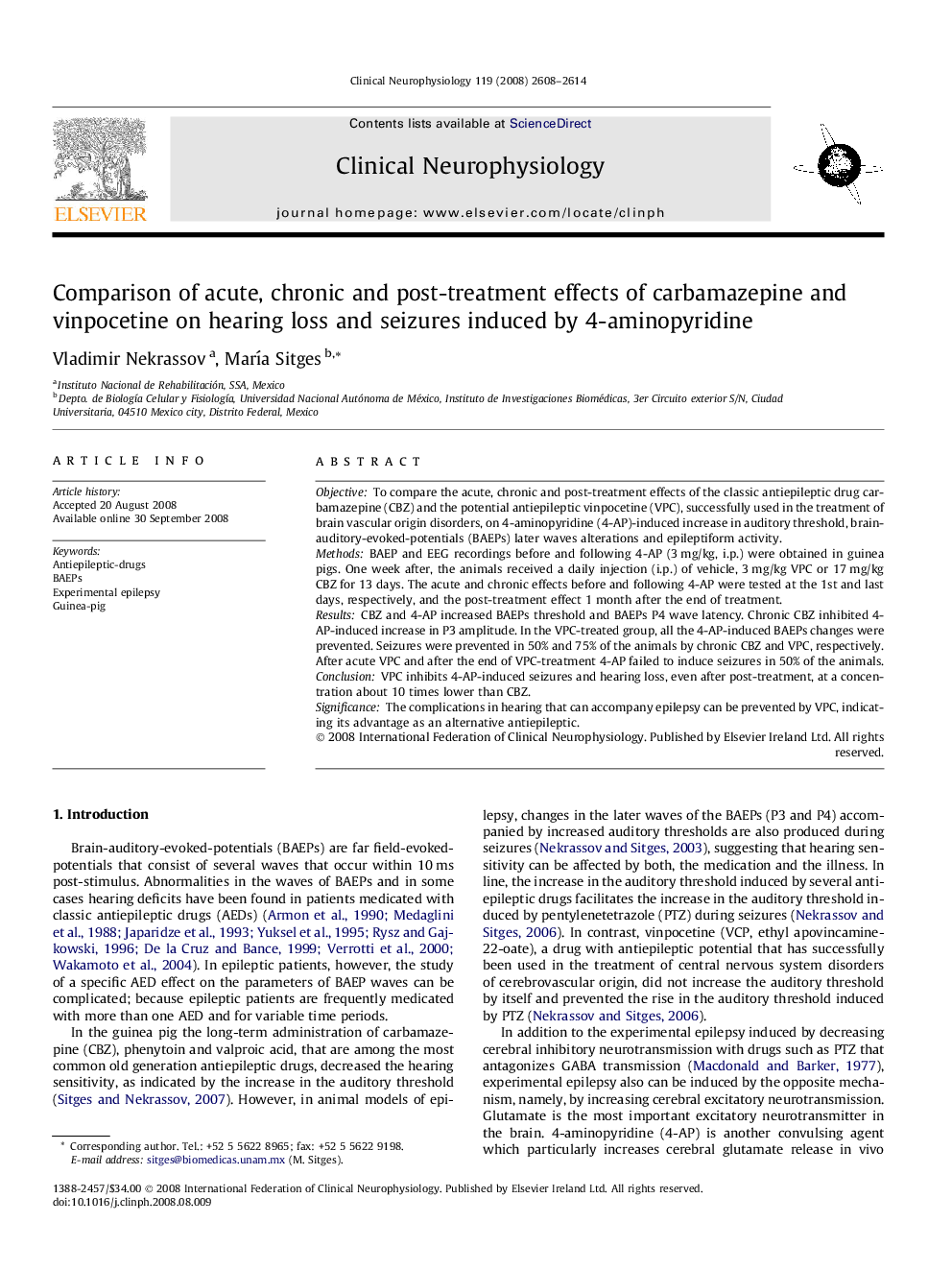| Article ID | Journal | Published Year | Pages | File Type |
|---|---|---|---|---|
| 3047022 | Clinical Neurophysiology | 2008 | 7 Pages |
ObjectiveTo compare the acute, chronic and post-treatment effects of the classic antiepileptic drug carbamazepine (CBZ) and the potential antiepileptic vinpocetine (VPC), successfully used in the treatment of brain vascular origin disorders, on 4-aminopyridine (4-AP)-induced increase in auditory threshold, brain-auditory-evoked-potentials (BAEPs) later waves alterations and epileptiform activity.MethodsBAEP and EEG recordings before and following 4-AP (3 mg/kg, i.p.) were obtained in guinea pigs. One week after, the animals received a daily injection (i.p.) of vehicle, 3 mg/kg VPC or 17 mg/kg CBZ for 13 days. The acute and chronic effects before and following 4-AP were tested at the 1st and last days, respectively, and the post-treatment effect 1 month after the end of treatment.ResultsCBZ and 4-AP increased BAEPs threshold and BAEPs P4 wave latency. Chronic CBZ inhibited 4-AP-induced increase in P3 amplitude. In the VPC-treated group, all the 4-AP-induced BAEPs changes were prevented. Seizures were prevented in 50% and 75% of the animals by chronic CBZ and VPC, respectively. After acute VPC and after the end of VPC-treatment 4-AP failed to induce seizures in 50% of the animals.ConclusionVPC inhibits 4-AP-induced seizures and hearing loss, even after post-treatment, at a concentration about 10 times lower than CBZ.SignificanceThe complications in hearing that can accompany epilepsy can be prevented by VPC, indicating its advantage as an alternative antiepileptic.
